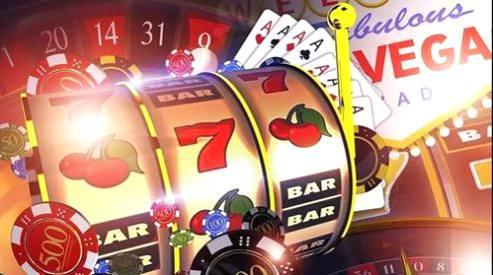Between the latter part of the 1800s and the mid-1900s, the stakes were moved to the area currently known as Las Vegas. Travelers and miners during the California run for unheard of wealth settled in the region and began to place bets. In any case, the crackdown on betting across the country has all but wiped out nearby bookmakers.
Birth of Las Vegas
In 1905, Las Vegas was founded, a small city that had recently been laid out for visiting trains running between Las Angeles and Salt Lake City. Betting remained illegal, but a few underground clubs did operate.
Gambling Comes to Vegas (Legal)
1931 forever changed how Las Vegas felt about what was to come. To begin with, the construction of the Hoover Dam was started, which attracted a large number of workers to the city. Casinos were allowed in the city, which brought a flow of cash into the city’s economy and flourished.

First casino
The first casino in Las Vegas was the Union Plaza Hotel, which opened its doors in 1906. The hotel was built by John S. Weatherford and George E. Wingfield, two of the city’s most prominent businessmen of the day. Union Plaza quickly became a popular destination for both locals and tourists, and this has helped make Las Vegas a popular destination for gambling and entertainment.
The evolution of the city and the casino
Gambling was legalized in the state of Nevada in the early 1900s, and Las Vegas quickly became a popular destination for travelers looking to take advantage of the new law. The first casinos in Las Vegas were simple establishments, often little more than bars with a few gaming tables set up in the back. But as word spread about the city’s burgeoning gambling scene, more and more people came to try their luck, and the casinos got bigger and more sophisticated.
In 1931, construction began on the Hoover Dam, bringing even more visitors to Las Vegas. The dam workers were paid in cash, and many of them spent their earnings in the city’s casinos. This influx of cash helped finance the construction of some of the most iconic casinos in Las Vegas history, including the Flamingo, which opened in 1945, and the Sands, which opened in 1952.

As Las Vegas has continued to grow, so has its reputation as a place where anything is possible. Gambling was only part of the picture; more and more the city became known for its extravagant shows and luxurious hotels. In 1966, MGM Grand (now Bally’s) opened its doors, ushering in a new era of mega resorts.
Today Las Vegas is home to some of the most famous casinos in the world including Caesars Palace, Bellagio and Venetian. Gambling still attracts visitors, but the city also offers world-class shopping, dining and entertainment. Whether you’re looking to hit the jackpot or just go sightseeing, Las Vegas has something for everyone.
Conclusion
Gambling is one of the main attractions of this city, and there are many options available to residents. Today there are more than 50 casinos in Las Vegas, from large resorts to small local establishments. Many of these casinos offer a variety of games of chance, including slots, blackjack, poker, and roulette. Some casinos also offer a range of non-gambling entertainment such as live performances, restaurants and hotels. Whether you’re looking for a place to play or just want to enjoy the other attractions that Las Vegas has to offer, there’s bound to be a casino that’s just right for you.
